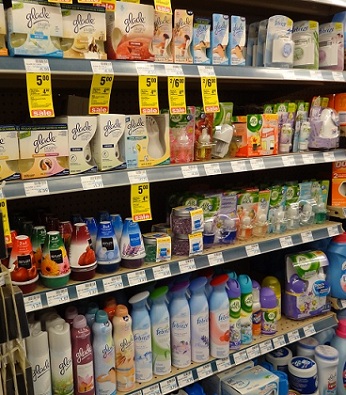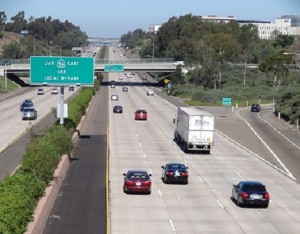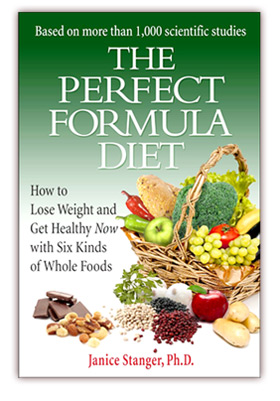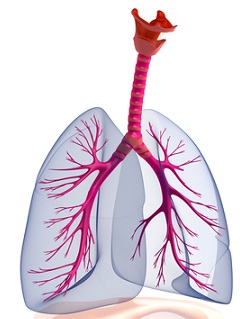
You know your lungs are vital for breathing. Think of them also as a point of exchange between you and your environment. What are you bringing into your body?
Give a Wide Berth to These Four Enemies of Air Quality
Your lungs are an entryway to your body, a site where you literally take in your environment. Millions of tiny air sacs in your lungs have walls only one cell thick. The oxygen necessary to life diffuses into your blood across this cell layer, and carbon dioxide, a waste product of metabolism, diffuses out to be eliminated from your body. This exquisite design is fundamental to life, and blocking it for only a few minutes will result in death.
Modern indoor and outdoor air pollutants are intruders hijacking this process, leading to premature death, disability, and damage that crosses generations. Microscopic pollutant particles and gases can cross the one cell layer of your air exchange sacs and enter your blood, from there carried throughout your body to cause widespread damage.
Other particles remain lodged deep in your lungs, provoking serious respiratory inflammation and harming your ability to get the oxygen needed for survival. Your lungs are structured to function in clean air, so don’t have mechanisms to filter out all these harmful bits of pollution.
You can, to a meaningful extent, control the amount of health-destroying pollutants that assault your lungs. But first you have to know what they are. Here are four of the most dangerous causes of air
pollution.
ONE. Fragrance. You might have thought of scented personal care and cleaning products as fun. You might have held the bottle to your nose for a big whiff, or sprinkled on perfume, or set “air freshener” loose in your house.
The Environmental Working Group’s comprehensive report Not So Sexy: The Health Risks of Secret Chemicals in Fragrance will set you on a safer path. By law, the ingredients in “fragrance” do not have to be listed on the label, to protect the manufacturer’s proprietary blend of any number 3,100 chemical ingredients.
Many of the chemicals used in artificial scents are associated with hormone disruption and allergic reactions. There is no scientific knowledge of the effects of most of these chemicals on human health, wildlife, or the planet’s ecosystems. No one knows the impact of a mixture of the risky substances, since they interact in your body and the larger environment. Manufacturers don’t even have to test for safety.
How can you protect yourself and the planet? Don’t buy any product with the word “fragrance” on the label. This includes perfumes and colognes, lotions, hair products, cleaning supplies, air fresheners, scented candles, dryer sheets, and so on. It’s fine to buy products fragrant with natural plant oils (for example, lavender oil). These will be labeled as a plant oil, not “fragrance.” If there is air freshener on the wall of the rest room you must use at work, ask management to have it removed.
TWO. Secondhand tobacco smoke. Just about everyone is aware of the health-destroying nature of secondhand smoke. But you might not be aware of just how risky it is to breathe this substance. If you hang around where people are smoking, take note. A recent study found that people with the highest exposure to secondhand tobacco smoke were 90% more likely to have arteries clogged with plaque than were those in the general public.
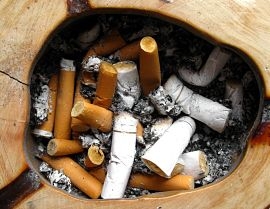
Even if you don’t use tobacco, the smoke billowing from the cigarettes of others can clog your arteries
In fact, breathing these tobacco emissions will put you at greater risk for coronary disease than will diabetes, high cholesterol, high blood pressure, or kidney disease. Clogged arteries greatly increase your risk for heart attack and stroke.
Again, there is a solution in sight. Stay away from anyone who is smoking indoors or out and from place where smoking is allowed, such as many casinos.
THREE. Traffic fumes. You may think of auto and truck emissions as unpleasant, without realizing how dangerous they truly are. Diesel emissions are especially risky, but all engines that burn fuel send out the ultra-tiny particulate matter that is the most dangerous form of air pollution. Remember, these microscopic particles, some 95% smaller than a human hair is wide, can penetrate into the deepest part of your lungs, and even into your bloodstream to attack cells throughout your body. These light, invisible particles are also carried on the wind great distances, again a threat to wildlife and ecosystems.
This particulate matter has both short-term and long-term health impacts. Short-term effects include
aggravating asthma, coughing, bronchitis, and hypertension, and increasing the immediate likelihood of heart attack. Longer term dangers include a greater likelihood of developing lung cancer, cardiovascular disease, reduced brain function, type 2 diabetes, rheumatoid arthritis, chronic inflammation, and premature death from chronic disease.
These toxins can even harm the next generation. A study of babies born between 1995 and 2006 in California found that a pregnant woman’s exposure to air pollution measurable increases her baby’s risk of developing autism.
While you may not be able to avoid living in a fume-filled urban area, you can lessen your exposure to traffic in many ways. For example, don’t live on a busy road. Take public transit whenever possible. Don’t exercise on traffic-filled streets or at rush hour, when emissions will be highest. Keep your share of the overall pollution down by driving a high-mileage car, maintaining it in optimal shape, and avoiding driving when you can.
FOUR. Meat fumes. If you love the smell of cooking meat, or think that barbecuing or grilling animal foods makes them healthier, you may be astonished to learn that many of the same chemicals and fine particles in tobacco smoke and traffic emissions also pervade the air when you cook meat. You risk your health, and especially the well-being of a growing fetus, by inhaling particles of cooking meat, chicken, turkey, and fish.
One of the most health-busting classes of chemicals common to tobacco smoke, traffic fumes, and meat smoke are polycyclic aromatic hydrocarbons (PAHs). These substances are a product of incomplete combustion of materials that contain carbon. Burn tobacco, wood, oil, gasoline, coal, garbage – or meat and fish – and PAHs will form. Over 100 varieties of PAHs can threaten our health and the environment.
Grilled or barbecued meat is even more hazardous than tobacco and traffic as a source of PAHs. At least you don’t eat tobacco or auto emissions. With the animal foods, you not only inhale the smoke, but you eat the PAHs that adhere to the meat or fish, thus getting a double dose of toxins.
PAHs are carcinogens and damage your eyes, liver, skin, red blood cells, immune system, and kidneys, in addition to your lungs. PAH-induced damage to DNA increases the risk of birth defects. For unborn children, exposure to PAHs can raise the likelihood of childhood cancers and impact brain development.
Meat fumes are among the easier air pollutants to avoid. Stay away from grilling and barbecuing meat,

Tasty, healthy, and non polluting. Wouldn’t you rather have a bowl of these colorful berries than a toxin-laden hunk of charred, greasy meat?
both indoors and out, and don’t eat it either. In fact, a colorful, appealing, whole foods, plant-based diet looks and tastes way better than a burnt, drab hunk of animal food anyway.
If you enjoyed this post, you might want to read more information on the dangers of barbecue and grilling animal foods.
Intrigued? Now you can use our Whole Foods Blog Finder to target informative, fun postings on whole foods, plant-based diets. Quick information at no cost!
Blog posting by Janice Stanger, Ph.D. Janice authored The Perfect Formula Diet: How to Lose Weight and Get Healthy Now With Six Kinds of Whole Foods. The book describes a whole foods, plant-based diet that can prevent, and even reverse, most chronic disease. Janice loves to hike in fresh air and does not buy products with “fragrance.”
Tags: air pollutants, air quality, barbecue, cancer, cardiovascular disease, diabetes, environmental degradation, fragrance, getting healthy, grilling, PAH, particulate matter, Plant-based nutrition, polycyclic aromatic hydrocarbons, secondhand smoke, traffic exhaust, whole foods plant-based diet
